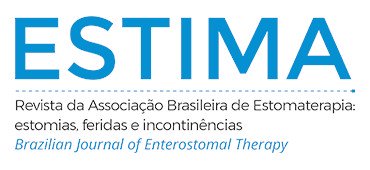ANALYSIS OF PATIENT’S SATISFACTION WITH CLEAN INTERMITTENT URETHRAL CATHETERIZATION
Abstract
Objectives: To compare and evaluate the aspects of the use of two bladder catheters for the person undergoing treatment with post-void residual, in clean intermittent bladder catheterization (CIL). Method: Quantitative, observational, and descriptive analysis developed in a reference outpatient clinic, for 48 municipalities, from September to November 2020. Fifty patients with post-void residual, who underwent CVIL, took part in the study. Their average age was 44,8 years old, and 72% of them were male. Two lubricated catheters were compared, from different technologies, both with attached bags, for seven days, six catheterizations a day, using a validated instrument of perception of customer satisfaction. Data were analyzed by the software Statistical Package for the Social Sciences (SPSS) Statistics 23.0, and for the comparison of the two catheters it was used the Wilcoxon’s non-parametric test. Results: The polyvinyl chloride (PVC) catheter pre-lubricated with glycerol reached greaterparticipant satisfaction in the evaluated attributes (90 versus 86%) in relation to the hydrophilic polyurethane (PVP) pre-lubricated catheter, although there was no statistical significance on the partial or total scores of the instrument used. Conclusion: The study allowed the comparison of two catheters, and the evaluation of the general score for both was positive. Some negative evaluation for certain attributes is possible to be improved. This kind of study is able to discriminate the catheters, and it can be reproduced.
Downloads
Metrics
References
Meska MHG, Mazzo A, Jorge BM, Souza-Junior VD, Negri EC, Chayamiti EMPC. Urinary retention: implications of low-fidelity simulation training on the self-confidence of nurses. Rev Esc Enferm USP 2016;50(5):831-7. https://doi.org/10.1590/S0080-623420160000600017
Gomes C, Yashimura N. Fisiopatologia das disfunções neurogênicas do trato urinário inferior e correlação topográfica das lesões neurológicas. In: Rios LAS, Averbeck MA, Madersbacher H, editors. Neurourologia: manual para a prática clínica. 2ª ed. São Paulo: Sociedade Brasileira de Urologia; 2017. p. 26.
Lapides J, Diokno AC, Silber SJ, Lowe BS. Clean, intermittent self-catheterization in the treatment of urinary tract disease. J Urol 1972;107(3):458-61. https://doi.org/10.1016/s0022-5347(17)61055-3
Brasil. Ministério da Saúde. Diretrizes de atenção à pessoa com lesão medular [Internet]. 2ª ed. Brasília: Ministério da Saúde; 2015 [acessado em 6 set. 2022]. 70 p. Available at: https://bvsms.saude.gov.br/bvs/publicacoes/diretrizes_atencao_pessoa_lesao_medular.pdf
Mazzo A, Souza Júnior VD, Jorge BM, Fumincelli L, Trevizan MA, Ventura CAA, Mendes IAC. Qualidade e segurança de assistência de enfermagem ao paciente em uso de cateterismo urinário intermitente. Rev Enferm Esc Anna Nery 2017;21(2):1-7. https://doi.org/10.5935/1414-8145.20170045
Medina-Polo J, Naber KG, Bjerklund Johansen TE. Health-care associated urinary tract infections in urology. GMS Infect Dis 2021;9;Doc05. https://doi.org/10.3205/id000074
B Braun Brasil. Ficha técnica Actreen® Glys SET: conjunto estéril pronto para uso para cateterização urinária intermitente [Internet]. B Braun Brasil [acessado em 6 set. 2022]. Available at: https://www.bbraun.com.br/content/dam/catalog/bbraun/bbraunProductCatalog/S/AEM2015/pt-br/b0/actreen-glys-set.pdf.bb-.75443181/actreen-glys-set.pdf
Vahr S, Cobussen-Boekhorst H, Eikenboom J, Geng V, Holroyd S, Lester M, Pearce I, Vandewinkel C. Catheterisation urethral intermittent in adults dilatation, urethral intermittent in adults. Copenhagen: European Association of Urology Nurses; 2013.(Evidence-based Guidelines for Best Practice in Urological Health Care).
Coloplast. SpeediCath® [Internet]. Coloplast; 2019 [acessado em 6 set. 2022]. Available at: https://www.coloplast.com.br/speedicath-1-pt-br.aspx
Figueiredo Junior AM, Frazão JM, Silva ATS, Trindade LM, Contente TMS, Machado TGH, Fernandes CS, Barbosa DSS, Silva CLT, Aguiar ACS. A importância do processo de educação em saúde entre estudantes da área da saúde: um relato de experiência. REAC/EJSC 2020;11:e3003. https://doi.org/10.25248/reac.e3003.2020
Bonello A, Faci MC, de Mello MP. A satisfação da pessoa com retenção urinária no uso de diferentes tipos de cateteres vesicais. ESTIMA, Braz J Enterostomal Ther 2021;19:e2321. https://doi.org/10.30886/estima.v19.1099_PT
Assis GM, Negri AF, Tung SA, Saccomani CGF, Moser ADL, Azevedo GR, Meira GM. Uso de cateteres vesicais para cateterismo intermitente limpo: satisfação da pessoa com lesão medular. Cogitare Enferm 2015;20(4):813-20. https://doi.org/10.5380/ce.v20i4.41585
Koeter I, Stensröd G, Hunsbedt Nilsen A, Lund R, Haslam C, De Sèze M, Sriram R, Heesakkers J, the LoFric Origo study group. User perception of a new hydrophilic-coated male urinary catheter for intermittent use. Nurs Open 2019;6(1):116-25. https://doi.org/10.1002/nop2.193
Orlandin L, Nardi A, Costa RRO, Mazzo A. Dificuldades de pacientes e cuidadores na realização do cateterismo intermitente limpo: revisão de escopo. ESTIMA, Braz J Enteros Ther 2020;18:e1520. https://doi.org/10.30886/estima.v18.907_IN
Campeau L, Shamout S, Baverstock RJ, Carlson KV, Elterman DS, Hickling DR, Steele SS, Welk B. Canadian Urological Association Best Practice Report: Catheter use. Can Urol Assoc J 2020;14(7):E281-9. https://doi.org/10.5489%2Fcuaj.6697
Comissão Nacional de Incorporação de Tecnologia. Cateter hidrofílico para cateterismo vesical intermitente em indivíduos com lesão medular e bexiga neurogênica. Brasília: Ministério da Saúde; 2019. v. 459.
Blanco J, Sousa LA de, Martins G, Bentlin JP, Castilho SS, Fumincelli L. Qualidade de vida e cateterismo urinário no contexto da enfermagem em reabilitação: uma revisão integrativa. Rev Eletrôn Enferm 2021;23:66576. https://doi.org/10.5216/ree.v23.66576
Boucher A, Cloutier J, Lebel S, Hamel M, Lamontagne P, Bolduc S. Hydrophilic-coated catheter appreciation study in a pediatric population. Can Urol Assoc J 2013;4(6):e150-4. https://doi.org/10.5489/cuaj.09138
Kelly MP, Barker M. Why is changing health-related behavior so difficult? Public Health 2016;136:109-116. https://doi.org/10.1016/j.puhe.2016.03.030
Le Breton F, Guinet A, Verollet D, Jousse M, Amarenco G. Therapeutic education, and intermittent self-catheterization: recommendations for an educational program and a literature review. Ann Phys Rehabil Med 2012;55(3):201-12. https://doi. org/10.1016/j.rehab.2012.01.006
Downloads
Published
How to Cite
Issue
Section
License
Copyright (c) 2022 Eliana de Fatima Martins Greghi, Gisele Regina Azevedo, Cibele Isaac Saad Rodrigues

This work is licensed under a Creative Commons Attribution 4.0 International License.

























